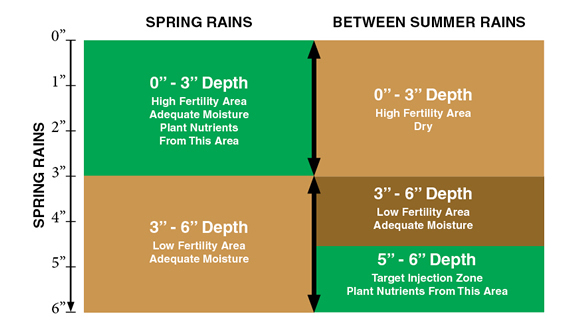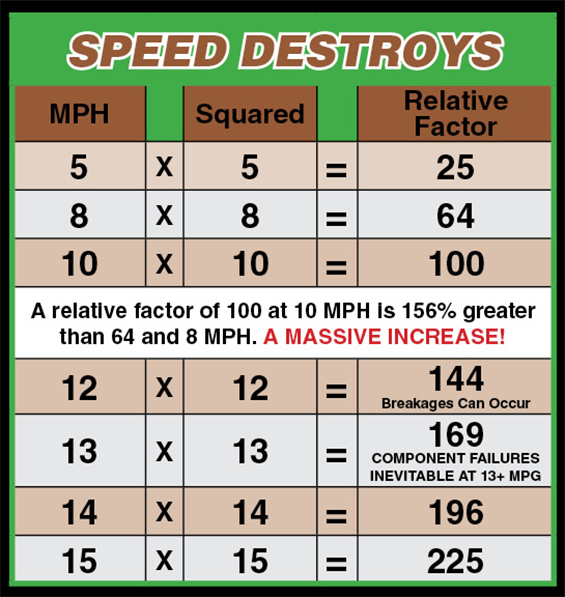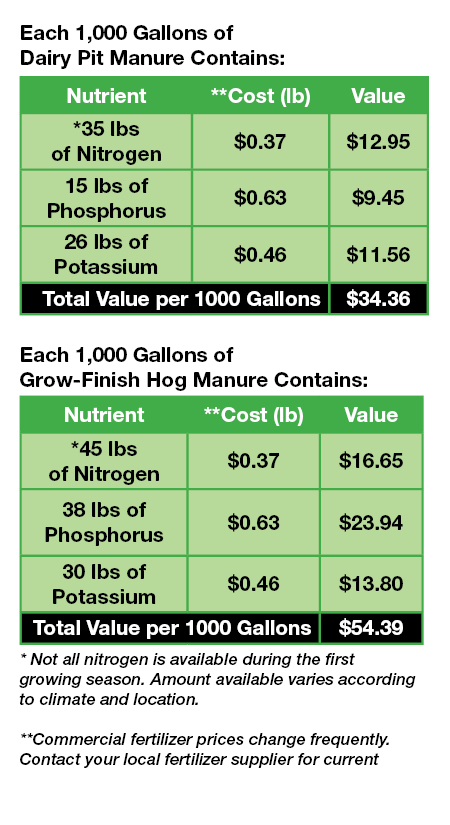

Soil Fertility Stratification
Soil Fertility and
Plant Nutrients
Plant Nutrients
- Minimum Tillage causes soil fertility to be high in the top 3" of soil and low at deeper depths.
- Each year the nutrients from the previous year's crop residue are mixed mostly in the top 3" of soil.
- Spreading with disc incorporators or rotary injectors results in more fertility in the top 3".
- Between summer rains, quite often, the top 3" of soil is dry and the plant is unable to use this area of high fertility.
Field Tests
- Various field tests have often shown deep placement of plant nutrients substantially increses yields, compared to surface application.
Conclusion
- With injection 5" - 6" deep, a substantial amount of nutrients are available between summer rains.
- All Agronomists agree nutrients should be placed in the Green Zone (5"-6" depth) for maximum yield.


Nitrogen & Phosphuros Benefits
A large amount of dairy pit manure
is surface applied. With the cost of nitrogen tripling in the last few years,
it is very profitable to inject. The following numbers show the approximate amount of nitrogen
found in tests conducted by Ohio State University as well as other independent organizations.
is surface applied. With the cost of nitrogen tripling in the last few years,
it is very profitable to inject. The following numbers show the approximate amount of nitrogen
found in tests conducted by Ohio State University as well as other independent organizations.

Proper Nutrient Placement Depth
- The top 6" of soil depth is generally considered the aerobic zone - i.e. the zone with oxygen.
- Below 6" of soil depth is called the anaerobic zone because of the lack of oxygen.
- Plant nutrients are more available in the top 6" of soil because a much greater amount of oxygen is present in the soil.
- The oxygen in the aerobic zone also helps break down the nutrients in animal waste to become available to the plants.
- Placing the nutrients in the 4"-6" depth rather than on the surface has several benefits.
- Plants cannot take up nutrients in dry soil. As soon as the surface soil dries, the nutrients are not available.
- Nitrogen does not escape to the atmosphere.
- Nutrients are not lost to erosion.
- Less weed pressure - High surface fertility promotes weed germination.
Horsepower Requirements Relative to Depth
Soil types vary widely so it is difficult to predict actual HP per shank. However, in almost all soil conditions it is safe to use the following formula:
When depth is increased 50%, the horsepower requirements will double.
Example:
- If you are operating 5" deep and the soil type requres 8 HP per shank; operating 7-12" deep, will require nearly 16 HP per shank. If you operate 10" deep, the horsepower will increase to approximately 24 HP per shank. All of the above examples are based on the same travel speed.
Summary:
With high fertilizer prices and high fuel prices, it is very important to place nutrients 5"-6" deep.
